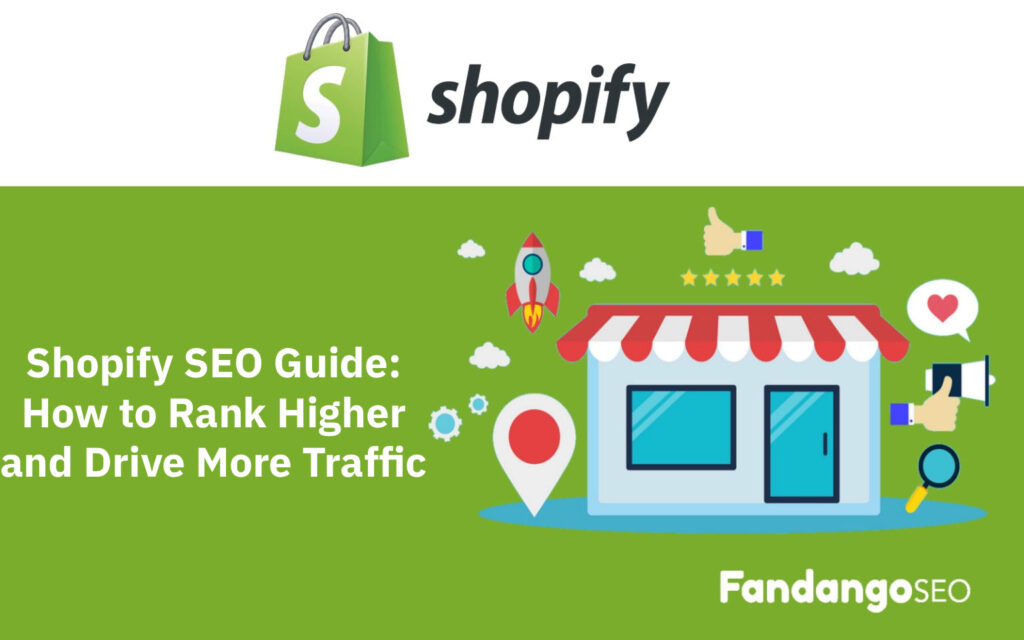Running a Shopify store is exciting, but without proper visibility in search engines, even the best products can get lost in the crowd. That’s where Shopify SEO comes in. With the right strategy, you can drive consistent, organic traffic and attract customers who are ready to buy.
In this Shopify SEO Guide, we’ll break down proven methods to help your store rank higher on Google, increase visibility, and generate more sales.

?What is Shopify SEO
Shopify SEO refers to the process of optimizing your online store to improve its ranking on search engines. Unlike paid ads, SEO generates long-term results by targeting customers actively searching for your products.
A well-executed Shopify SEO Optimization strategy includes technical improvements, keyword targeting, content creation, and performance enhancements. When done correctly, it allows your store to compete with big brands and win more organic clicks.
Why Shopify SEO Matters
Investing in Shopify SEO has multiple benefits:
- Higher rankings: Appear on the first page of Google for product and category keywords.
- Increased organic traffic: Attract customers without paying for ads.
- Better conversions: Reach people who are already interested in your products.
- Sustainable growth: Unlike paid campaigns, SEO continues to bring results over time.
This Shopify SEO Guide is designed to help store owners leverage these benefits effectively.
Step 1: Keyword Research for Shopify SEO
Keyword research is the foundation of any Shopify SEO Optimization strategy.
- Use tools like Google Keyword Planner, Ahrefs, or SEMrush to find relevant terms.
- Target a mix of product-specific keywords (e.g., “leather laptop bag”) and broader search terms (e.g., “best laptop accessories”).
- Optimize titles, meta descriptions, and product descriptions around these keywords.
Pro Tip: Long-tail keywords are easier to rank for and usually convert better.
Step 2: Optimize On-Page Elements
On-page SEO ensures that every page of your store is search-engine friendly.
- Meta Titles & Descriptions: Add primary keywords naturally.
- Headings (H1, H2, H3): Structure your content for better readability.
- Alt Text for Images: Helps Google understand your visuals.
- URL Structure: Keep URLs short, descriptive, and keyword-rich.
Using Shopify SEO Tools like Plug in SEO can help identify missing or weak elements quickly.
Step 3: Improve Site Speed & Mobile Experience
A slow website can hurt rankings and frustrate customers.
- Compress images with apps like TinyIMG.
- Enable AMP for faster mobile pages.
- Choose a lightweight Shopify theme optimized for performance.
Mobile-first indexing means Google primarily uses the mobile version of your site to rank content. Prioritizing speed is a key Shopify SEO Optimization tactic.
Step 4: Create High-Quality Content
Blogging and content marketing are powerful Shopify SEO Tips.
- Publish blog posts targeting product-related queries.
- Add buyer’s guides, comparisons, and tutorials.
- Incorporate keywords naturally without overstuffing.
This helps establish authority in your niche and drives organic traffic beyond product pages.
Step 5: Build High-Quality Backlinks
Backlinks remain one of Google’s top ranking factors.
- Reach out to bloggers and influencers for product reviews.
- Guest post on relevant websites in your industry.
- Use PR campaigns to get featured on media outlets.
Backlinks not only boost rankings but also bring referral traffic to your store.
Step 6: Use Shopify SEO Tools for Analytics
To monitor progress, use the right Shopify SEO Tools:
- Google Search Console – Tracks impressions, clicks, and indexing issues.
- Google Analytics – Measures organic traffic and conversions.
- Ahrefs / SEMrush – Monitors backlinks and competitor performance.
These tools help refine your Shopify SEO Optimization strategy over time.
Step 7: Leverage Shopify SEO Apps
Shopify offers multiple apps to automate SEO tasks.
- Plug in SEO – Fixes common SEO issues.
- SEO Manager – Provides detailed optimization options.
- Image Optimizer – Automates image compression and alt text.
Adding these apps is one of the most practical Shopify SEO Tips for beginners.
Frequently Asked Questions About Shpify SEO
?How long does Shopify SEO take to work
Most stores see results within 3–6 months, depending on competition and consistency.
?Do I need apps for Shopify SEO
Not always, but Shopify SEO Tools can save time and catch errors automatically.
?Is Shopify SEO better than running ads
Ads bring quick results, but SEO is long-term and more cost-effective. The best strategy often combines both.
?What are the best Shopify SEO Tips for beginners
Focus on keyword research, optimize product pages, and improve site speed before moving to advanced strategies.
Conclusion
Boosting your store’s visibility is not just about ads — it’s about long-term growth. With the right Shopify SEO strategy, you can drive consistent traffic, rank higher on Google, and turn visitors into paying customers.
This Shopify SEO Guide covered everything from keyword research to backlinks and apps. Start applying these steps today, and watch your organic sales grow.
At Growsera, we specialize in Shopify SEO Optimization and scaling eCommerce stores.
Book a free consultation to get expert help improving your store’s rankings.